The Middle East has been at the receiving end of a lot of military action since early January 2020, and the latest wave in that came today (January 8, 2020) with an Iranian missile strike on Iraqi military bases which houses U.S. troops. After this action, the US aviation regulator Federal Aviation Administration announced airspace restrictions on American carriers valid immediately.
#FAA Statement: #NOTAMs issued outlining flight restrictions that prohibit U.S. civil aviation operators from operating in the airspace over Iraq, Iran, and the waters of the Persian Gulf and the Gulf of Oman. pic.twitter.com/kJEbpPddp3
— The FAA ✈️ (@FAANews) January 8, 2020
As you can see, the ban covers the entire Tehran Flight Information Region. And this would be the starting point of more diversions from the region. US FAA usually leads in advisories and NOTAMs and while other countries are not under obligation, many times they follow on to issue their own NOTAMs to their airlines. The Iranian corridor is a bustling air corridor for airlines which fly to India and other parts of South and East Asia and took a lot of the overflow from the Pakistan Airspace closure in 2019. Also, with the current ongoing Qatar blockade, Qatar Airways only has the Iranian airspace to conduct flights to and from the Western world.
How does this affect flight operations to the region?
The immediate response to this action was from British Airways, which had a flight operating from London to Dubai (BA109) at the time the airspace restrictions came on. While they did not cover British Airways, BA proactively diverted its flight to Istanbul as they would have been directly over the said flightpath if they continued the journey.

Impact on flights to India
This snapshot shows you an interesting divergence in approach for the various carriers. While British Airways took a more extended routing for their flights originating from Mumbai to London, Air India seems to be continuing in the Iranian airspace. How this pans out in the coming days remains to be seen.
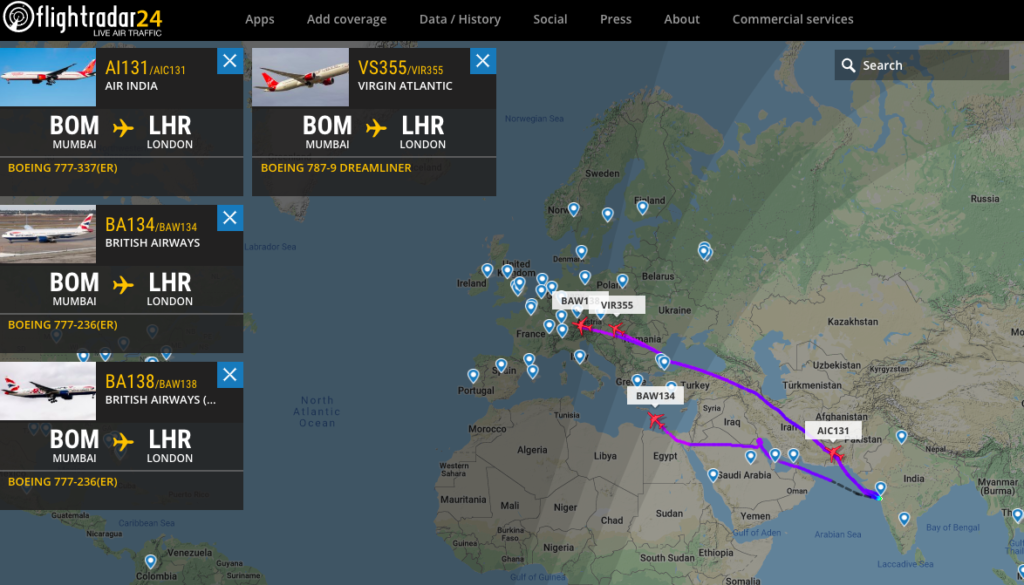
Impact on Air India
Air India’s immediate threat assessment seems to be negligible at the moment, as Air India has had two flights to London take off and head into Iranian Airspace, one from Ahmedabad and one from Mumbai.
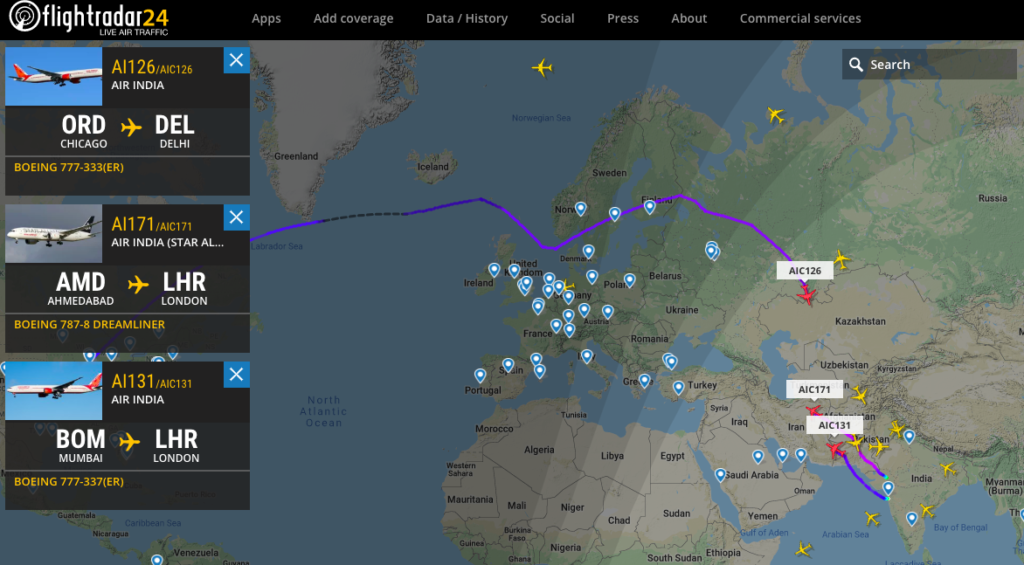
Impact on flights to and from the USA
At this moment there does not seem any effect on the flights coming in from the USA. Typically flights from Delhi come in via the Afghanistan/Pakistan corridor which is now open. Flights to Mumbai need to use the Iranian passage, and we need to see what routing will the US carriers take now, as United and Delta have both dispatched their flights, but they are still about ten hours away from entering the region.

[Update] Impact on Etihad Airways
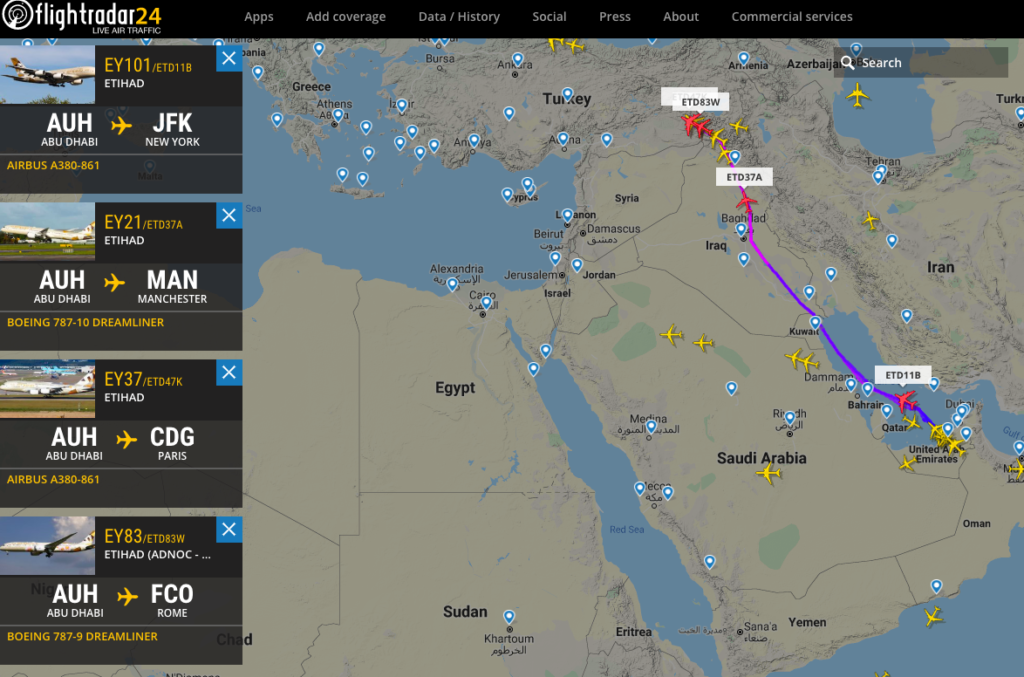
It seems that Etihad had many of their flights on the European bank and US bank take-off delayed than usual. Etihad is trying to not use the Iran air corridor, but overflying Iraq to set course for Europe. In some other cases, they are overflying via Iran as well. It all seems to be on a case by case basis.
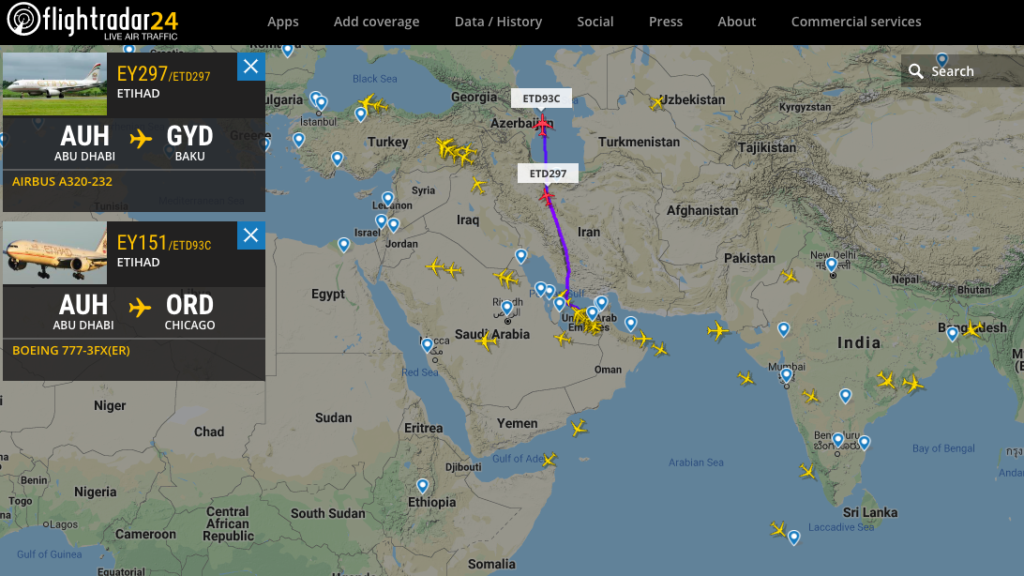
[Update] Impact on Emirates
It seems that Emirates had many of their flights on the European bank and US bank take-off delayed than usual. Etihad is trying to not use the Iran air corridor, but overflying Iraq to set course for Europe. In some other cases, they are overflying via Iran as well. It all seems to be on a case by case basis.
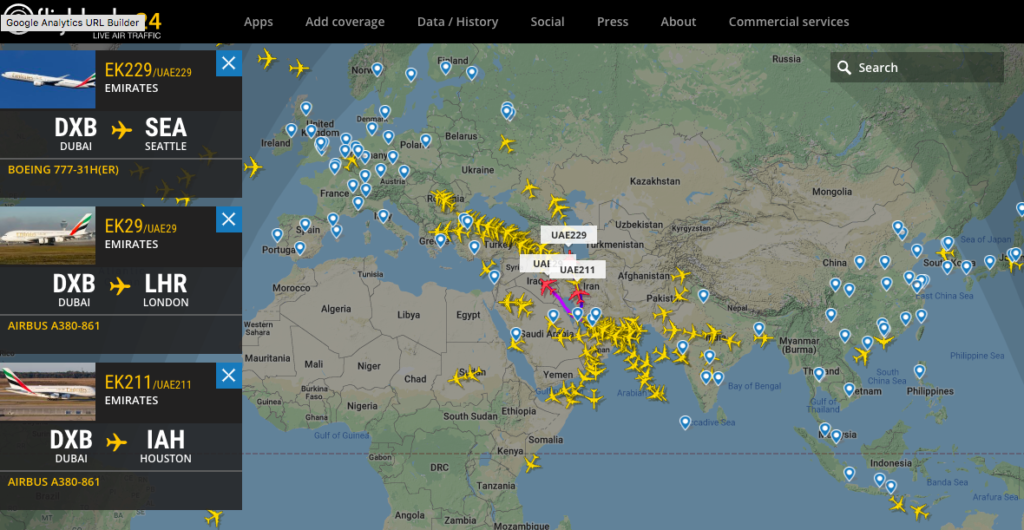
Impact on other airlines using the Iranian Airspace
Earlier than today’s move, FAA had already prohibited US carriers from flying below 26,000 feet over Iraq and in 2019 had put restrictions on operating in the Iranian airspace. As per Reuters,
Korean Air Lines Co Ltd and Thai Airways said they had been avoiding Iranian and Iraqi airspace before the attack on U.S. troops.
Singapore Airlines Ltd said after the attacks that all of its flights would be diverted from Iranian airspace. Malaysia Airlines said it did not fly over Iraqi airspace and would re-route to avoid Iran as a result of the attack. Taiwan’s China Airlines said it would not fly over Iran or Iraq because of the regional tensions.
Bottomline
While there are already conciliatory tones from both end being talked about, we will see how this goes. So far, from an Indian perspective, they assess the region to be safe to pass through while for American and British Carriers, the airlines don’t want to pass through the zone at the moment. One thing is for sure, with longer flight routes come longer flight times, and more expensive flights in the days ahead, which is not good for the travelling public. But this is a developing story, and we need to see how this goes.
What do you make of the current escalation in the Middle East from an Air Traffic perspective?
(All information gathered on January 8, 2020, between 4:30 UTC and 5:30 UTC)


Was on EY 12 Yesterday. Can confirm that we avoided the whole Iran-Iraq airspace and flew over Egypt before flying over Saudi Arabia and landing at AUH. Flight timing was not impacted due to crazy tailwinds of almost 250 KM/H. At one point our true ground speed was over 1100 KM/H !!
What’s the update on this? What will happen to Qatar Airways flights to the US?